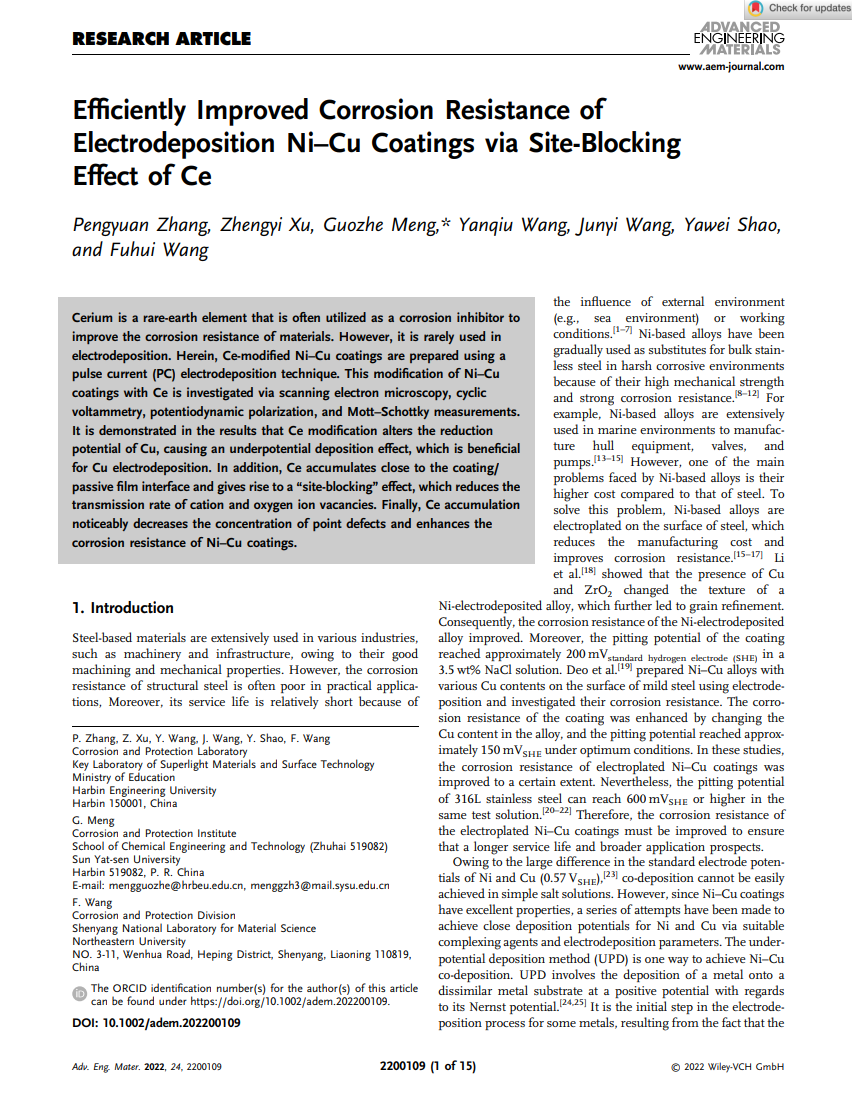Cerium is a rare-earth element that is often utilized as a corrosion inhibitor to improve the corrosion resistance of materials. However, it is rarely used in electrodeposition. Herein, Ce-modified Ni–Cu coatings are prepared using a pulse current (PC) electrodeposition technique. This modification of Ni–Cu coatings with Ce is investigated via scanning electron microscopy, cyclic voltammetry, potentiodynamic polarization, and Mott–Schottky measurements. It is demonstrated in the results that Ce modification alters the reduction potential of Cu, causing an underpotential deposition effect, which is beneficial for Cu electrodeposition. In addition, Ce accumulates close to the coating/ passive film interface and gives rise to a “site-blocking” effect, which reduces the transmission rate of cation and oxygen ion vacancies. Finally, Ce accumulation noticeably decreases the concentration of point defects and enhances the corrosion resistance of Ni–Cu coatings.
